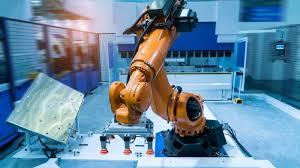Source: it.toolbox.com
Overview of Image and Video Compression
Image and video compression enables you to deliver high-quality media with lower storage and bandwidth requirements. It reduces the size of files, making media easier to transfer and cheaper to store.
To understand how this works, consider any image. Within the image there are many pixels that display the same information, creating spatial redundancies. Compression techniques reduce these redundancies by eliminating or modifying image information. For example, Huffman coding uses entropy coding methods while Discrete Cosine Transform (DCT) uses cosine functions to approximate signal frequencies.
There are a variety of compression standards you can use, depending on the desired outcome. The standard you choose can apply a method such as DCT to identify areas that overlap and eliminate extra data. When this occurs, the quality of media decreases but typically not in a way that viewers can perceive.
This is because high frequencies, such as those created by intense changes or small, sharp details cannot be distinguished by the human eye. The result is that high-resolution images or color spectrums can be reduced to save space.
You can also use methods like DCT on video, however, there are additional methods that you should use as well. For example, interframe compression, which reuses information from initial or subsequent frames to predict frame information. Predictable information can then be eliminated, saving space. Standards that use this method include MPEG and H.264.
Previously, compression was performed only with static algorithms. Recently, however, researchers have developed dynamic compression methods which take advantage of convolutional neural networks (CNNs). These methods use CNNs to perform feature extraction, which can then guide compression algorithms.
What Are Codecs?
Codecs are software or hardware tools containing compression standards. You use codecs to encode and decode data. Codecs are required for compression as well as media viewing or playback.
Some common examples of video codecs are VP9, H.264, and RV40. These codecs are used to modify video streams only, however. To fully compress a video, you also need to use audio codecs, such as MP3, FLAC, or Fraunhofer FDK AAC. In combination, these codecs enable you to compress your videos and all related data, such as audio or title tracks.
One important note about codecs is that a codec is different from a container. Containers are packages that encapsulate all files associated with a video, including video and audio streams, title tracks, metadata, and codecs. Containers are used to interface decoded video data with client players. A container does not dictate how videos are encoded or decoded outside of the codecs it contains. Codecs and containers are frequently confused with each other, because these tools sometimes share the same name. For example, FLAC.
Machine Learning Algorithms for Video CompressionAs AI and machine learning (ML) technologies have advanced, these tools have become useful for improving compression methods. There are multiple ML variations that you can use for compression, but the three main algorithm types are:
- Supervised: Uses predictive capabilities to process and compare large amounts of data in a timely manner. This makes this method well-suited to video processing, making it the most commonly used for encoding and compression.
- Unsupervised: Uses comparison methods to identify similarities in video content. You can use this method to leverage bandwidth economies.
- Reinforcement: Uses feedback loops to refine the algorithm with each successive pass. When these algorithms are used, each adjustment depends on the effects of the previous modification.
The inclusion of machine learning in video compression has the potential to exponentially accelerate the pace of improvement. It can reduce the time needed for compression and the cost of both standard development and processing resources needed.
Machine learning also creates a potential for custom compression algorithms, designed to match each video being processed. This has significant implications for the future of digital media and can help media providers optimize video delivery as they move to the cloud.
The Benefits of Machine Learning and AI for Video Compression
Creating and refining compression tools takes a significant amount of expertise, effort, and time. Integrating AI and machine learning in this process can substantially ease and speed both creation and compression processes. The incorporation of machine learning can provide additional benefits, including:
Faster time-to-market
Machine learning capabilities can enable you to automate compression and codec creation. Using reinforcement learning methods, you can continuously refine both codec development and compression processes with minimal continuing effort. This supported automation helps you optimize your time and speeds overall video processing and delivery.
Improved encoder density
The integration of machine learning enables you to create and use more efficient codecs. Additionally, many machine learning algorithms can be performed in Graphical Processing Units (GPUs) rather than Computer Processing Units (CPUs). GPUs are specialized processors that you can use to perform co-processing in parallel. The use of GPUs can decrease your processing time and improve productivity since CPU power is reserved for other tasks.
Wrapping Up
Current compression algorithms are only able to process a limited amount of data and cannot perfectly correlate patterns. Codecs that incorporate machine learning enable you to process video data with greater detail and accuracy. These tools may even enable you to process data on a pixel-by-pixel level as opposed to frame-by-frame. The result is smaller file sizes with higher quality streams.


